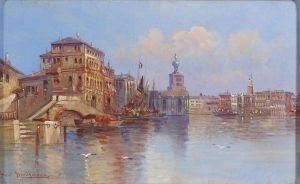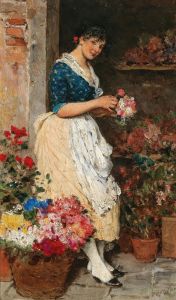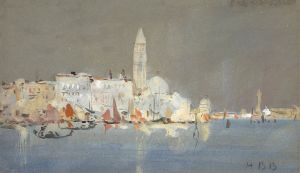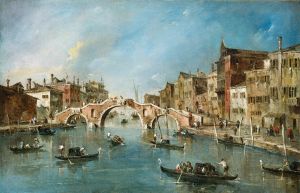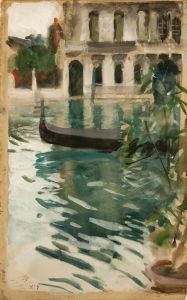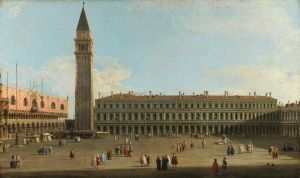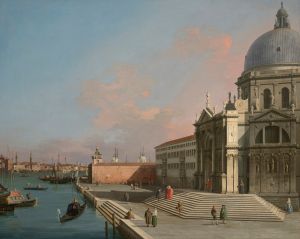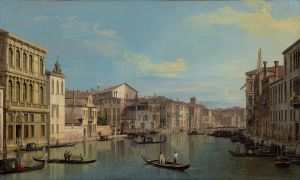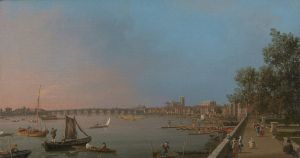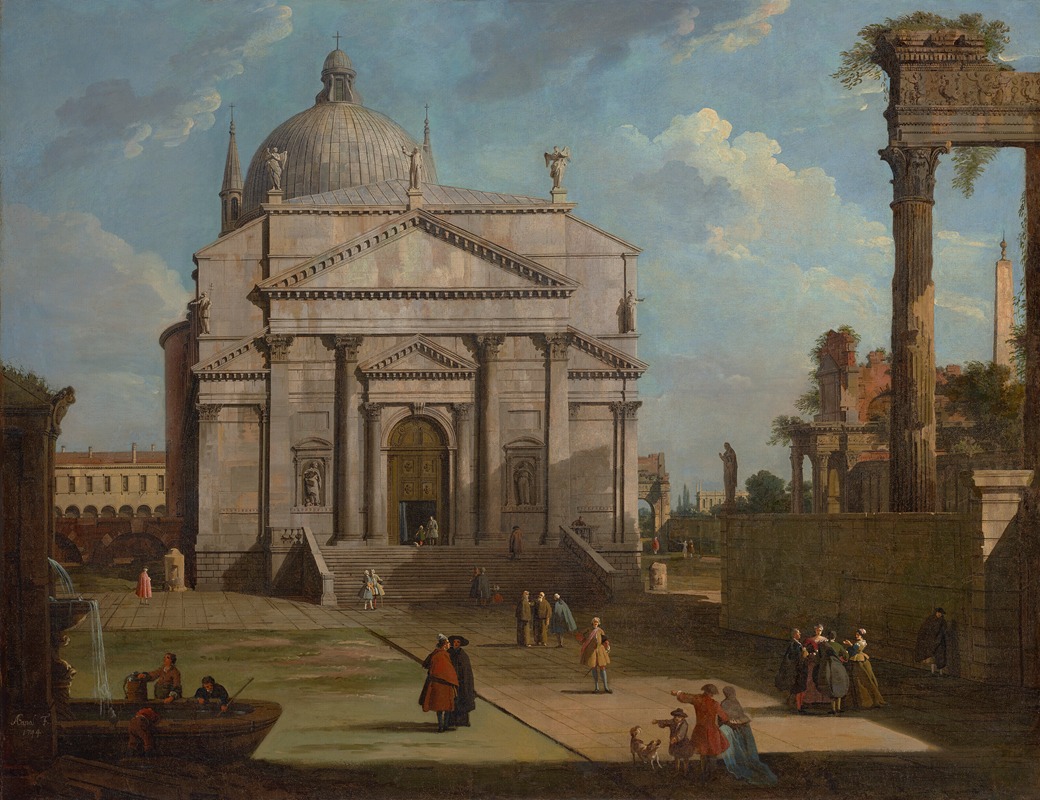
A capriccio with the church of the Redentore
A hand-painted replica of Canaletto’s masterpiece A capriccio with the church of the Redentore, meticulously crafted by professional artists to capture the true essence of the original. Each piece is created with museum-quality canvas and rare mineral pigments, carefully painted by experienced artists with delicate brushstrokes and rich, layered colors to perfectly recreate the texture of the original artwork. Unlike machine-printed reproductions, this hand-painted version brings the painting to life, infused with the artist’s emotions and skill in every stroke. Whether for personal collection or home decoration, it instantly elevates the artistic atmosphere of any space.
"A Capriccio with the Church of the Redentore" is a painting by the renowned Italian artist Giovanni Antonio Canal, better known as Canaletto. Canaletto, born in Venice in 1697, is celebrated for his detailed and evocative landscapes and cityscapes, particularly those depicting the city of Venice. His works are characterized by their meticulous attention to architectural detail and their ability to capture the unique atmosphere of the places he painted.
This particular painting, "A Capriccio with the Church of the Redentore," is an example of a capriccio, a genre of painting that combines real and imaginary elements to create a fantastical scene. The term "capriccio" refers to a work that is not bound by the constraints of reality, allowing the artist to exercise creative freedom in the composition. In this painting, Canaletto includes the Church of the Redentore, a significant Venetian landmark, but places it within an imaginative setting.
The Church of the Redentore, or Il Redentore, is a prominent church in Venice, designed by the architect Andrea Palladio. It was constructed as a votive church to give thanks for the city's deliverance from a devastating plague in the 16th century. The church is situated on the island of Giudecca and is one of the masterpieces of Palladian architecture, known for its classical symmetry and grandeur.
In Canaletto's painting, the Church of the Redentore is depicted with remarkable precision, showcasing the artist's skill in rendering architectural details. However, the surrounding elements in the painting may not correspond to the actual geography of Venice, as is typical in a capriccio. Canaletto often employed this technique to explore creative compositions and to evoke a sense of wonder and imagination in the viewer.
Canaletto's capriccios were popular among collectors and art patrons of his time, as they offered a blend of recognizable landmarks and imaginative elements. These works allowed viewers to engage with familiar scenes in new and unexpected ways. The artist's ability to balance realism with fantasy in his capriccios contributed to his reputation as one of the leading painters of his era.
The painting exemplifies Canaletto's mastery of light and shadow, as well as his ability to capture the serene beauty of Venice. His use of perspective and attention to detail create a sense of depth and realism, drawing the viewer into the scene. The inclusion of figures and boats adds a dynamic element to the composition, suggesting the lively atmosphere of Venetian life.
"A Capriccio with the Church of the Redentore" is a testament to Canaletto's artistic vision and his ability to transcend the boundaries of traditional landscape painting. It reflects his deep appreciation for the architectural beauty of Venice and his skill in transforming reality into a captivating work of art. Today, Canaletto's paintings continue to be celebrated for their artistic merit and their contribution to the visual documentation of 18th-century Venice.






